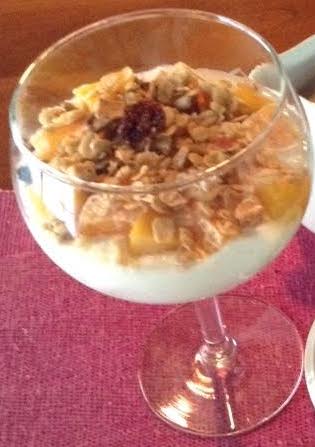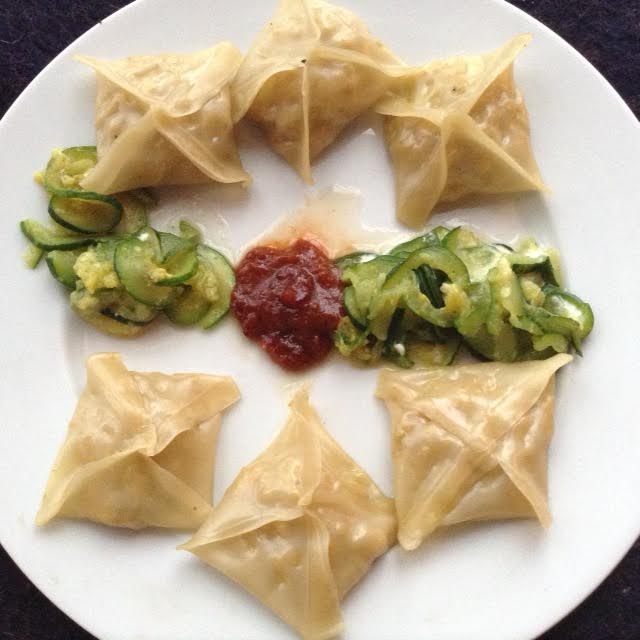How this Fast Diet Lifestyle works: Eat these meals tomorrow, for a calorie total of less than 600. On another day this week, eat the meals from a different post, another day of eating 600 calories or less. Eat sensibly the other days of the week. That’s it: a simple way to lose weight and be healthier.
Sikhism is the 5th largest religion in the world, yet many people are unaware of it. After 9/11 in the United States, Sikhs were attacked around the country. Why? Because Sikhs wear turbans, and those who were more scared than thoughtful thought that turbans = Arabs = al Quaida. NOT true. Who are the Sikhs? They are a religious movement from the Punjab region, now partly in Pakistan and partly in India. Five hundred years ago, the Guru Nanak taught that there was one god, that people were equal to each other, and that our bodies are just a temporary vessel for our souls. Nine successive Gurus succeeded Nanak, all emphasizing the core tenets of the faith: honest work and truthfulness; giving to those in need and sharing what you have; and living with humility. Over the centuries, the Sikhs came to wear turbans, both to distinguish them on the battle field and to bind up their long, unshorn locks. At that time only nobility wore turbans, so the Sikhs were asserting that everyone is equal. They also adopted unifying names: the last name of Singh for the men, and the last name Kaur for the women. The new religion was attacked by the invading Moghuls and also by the local Hindus, their Gurus being arrested or executed. On April 13, 1699, at the Harvest Festival, the 10th Guru, Gobind Singh, decided that the Sikhs needed to be able to defend themselves. He established the Khalsa Panth, a fighting force of men and women. This group successfully fought to defend themselves and they regained territory over the following decades. In 1801, they established Punjab as an independent state with Lahore as capital. After being defeated by the British, the warrior Sikhs became an important element of the British army. The nation of India, freed from colonialism in 1947, divided Punjab with Pakistan, and the Sikhs opted to ally with the Indians. Today Sikhs can be found all over the world, with the greatest numbers in Canada, England, the US, and Australia, following the 5Ks and hoping not to be misunderstood in a fearful world.
Some Sikhs refrain from eating meat as part of their faith, so our breakfast is meatless. Our dinner is from Northern India, utilizing a popular street food as the main component. For those Sikhs who do eat meat, this one is for you. To all of you, happy Vaisakhi, happy New Year. As I learned more about the Sikhs while writing this blog, I couldn’t help comparing them to the Mandalorians of Star Wars popularity: they do not take off their turbans/helmets in public; men and women are trained as warriors; and they follow a creed/The Way which directs their actions. I sincerely hope that this is taken in the complementary way that I intend it.
Mango-Citrus Parfait: 254 calories 6 g fat 2.6 g fiber 23 g protein 23 g carbs 265 mg Calcium NB: Food values given are for the plated foods only, and do not include the optional beverage. PB GF Fast Food Restaurants decided years ago to offer ‘healthy options’ in the form of yogurt parfaits. Full-fat yogurt, fruit, and lots of high-fat granola. Poor choice. Here is a more acceptable breakfast option, full of protein yet low in fat and enough calories to keep you going for hours. NB: This could be a healthy Slow Day lunch option. HINT: This recipe serves two [2].
½ cup low-fat [1%] cottage cheese ½ cup plain yogurt 1 oz mango cubes ½ clementine [skin it and use half the segments] 2 Tbsp granola Optional: blackish coffee [53 calories] or blackish tea or mocha cafe au lait [65 calories] or lemon in hot water
Stir the cottage cheese and yogurt to combine thoroughly. Divide the fruit into two portions. Spoon half of the dairy mixture into a wide-mouthed wine glass and top with half the fruit. Sprinkle with 1 Tbsp of granola. Repeat with the remaining ingredients in the same order, topping with granola. Prepare a beverage and enjoy that dairy-fruit goodness.
Momos with Chicken: 222 calories 1.5 g fat 2 g fiber 15.4 g protein 30 g carbs 58 mg Calcium PB Steamed momos are one of the most popular street foods of Northern India, due to the influence of neighboring Nepal and the fact that they are delicious. Try them and you will agree. Looks long and complex, but it is do-able.
Filling: makes 2 cups; you will need 1 Tbsp for each piece. Freezes well.
8 oz chicken breast, cubed 1 tsp tumeric 1 Tbsp ginger-garlic paste 2 tsp ginger, minced 3 Tbsp carrot, grated or chopped 3 Tbsp cabbage [Bok Choy or Napa] chopped 1 Tbsp scallion, sliced 1 cup onion, chopped pinch sugar [or omit] salt + pepper 1 tsp soy sauce 1 tsp chili sauce 1 tsp catsup
Prepare a mise en place. Put the chicken, tumeric, and garlic paste in a small pan with 1-2 Tbsp water. Put on a lid and cook until chicken is just a little pink. Remove from heat and strain the liquid from the chicken. Return the chicken liquid to the pan and add the ginger and the garlic. Cook on high for 30 seconds, turn heat down, add the carrot, cabbage, scallion, and onion. Cook until vegetables are soft and onion is translucent. Add the sugar, salt, and pepper, and return the chicken to the pan. Stir and cook. Transfer to a food processor and reduce to a mince. Set aside to cool. Enough for 30 momos.
Forming the momos: for 1 serving, you will need six 3.5” wonton wrappers. for the entire batch, you will need 30 wrappers
Put some water into a custard cup. Lay the wonton wrappers on a large, clean surface. With your finger, moisten all the edges of each wrapper with water. Put a tablespoon-full of filling in the center of the wrapper. I brought up each corner to the center and pinched the four edges together to look like a crab rangoon. Or make triangles, as you would for wonton soup. Put each finished momo aside, covered with a damp cloth until ready to steam.
Steaming the momos: Prepare your steamer in the wok by adding enough water that the level comes up the side of the steamer but is not above the level of the bottom rack. Put parchment paper or foil on each rack but allow the steam to flow freely. You could use cupcake papers. When the water in the wok is hot and steaming, add the momos. Cover and steam 10-15 minutes. Remove from steamer and plate.
Side dish: I spiral cut 3 oz zucchini and put it in to steam for 5 minutes. It was overcooked. Profit from my mistakes. Then I tossed it with one tsp plain yogurt and ½ tsp curry powder. Next time I’d just cube raw zucchini or cucumber to mix with the yogurt. Serve along with chutney mixed with catsup.
Ingredients for next week: Breakfast, single portion for Monday …………………………… single portion for Thursday:
| 70-calorie whole-grain bread | 1 two-oz egg + back bacon or Canadian bacon, 33-calories |
| 2%-fat cottage cheese | apple + Cashel or other Blue cheese + raisins |
| chives + plum | Irish Soda Bread: white whole wheat flour + flour |
| smoked trout | sugar + caraway seed + butter + baking soda |
| Optional smoothie | sour milk/buttermilk + baking powder |
| optional hot beverage | optional Irish Breakfast Tea + milk |
Dinner, single portion for Monday:………………………….. single portion for Thursday:
| herring marinated in wine + onion | butter + onion + potato |
| beets: canned or freshly-cooked | chicken stock + whole milk |
| apple + vinegar + lettuce + dill pickle | wild greens: dandelion; garlic mustard; sorrel; chives |
| canned white beans + hard-boiled egg | ricotta, part skim + chorizo + Finn crisp |
| Sparkling water | Sparkling water |
























